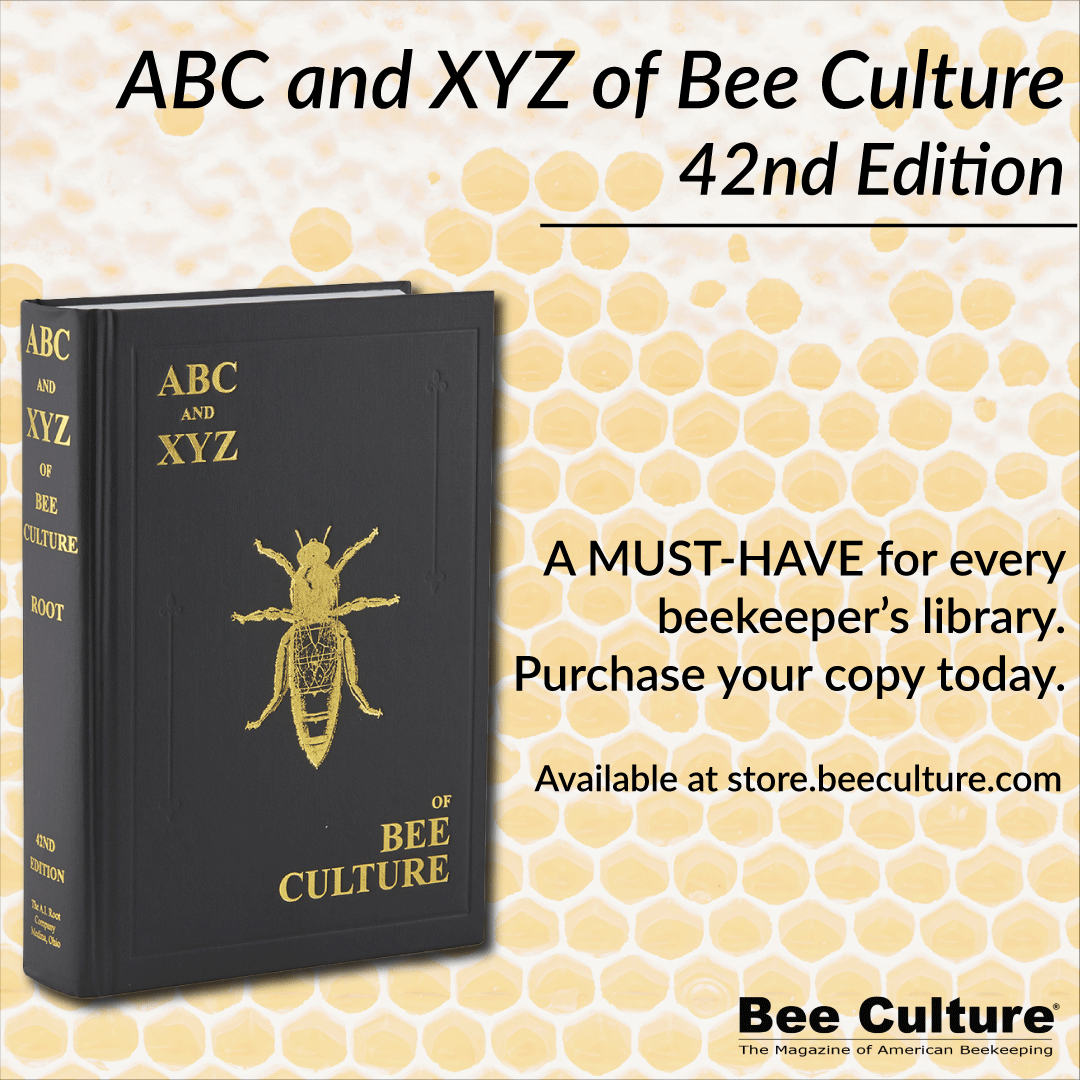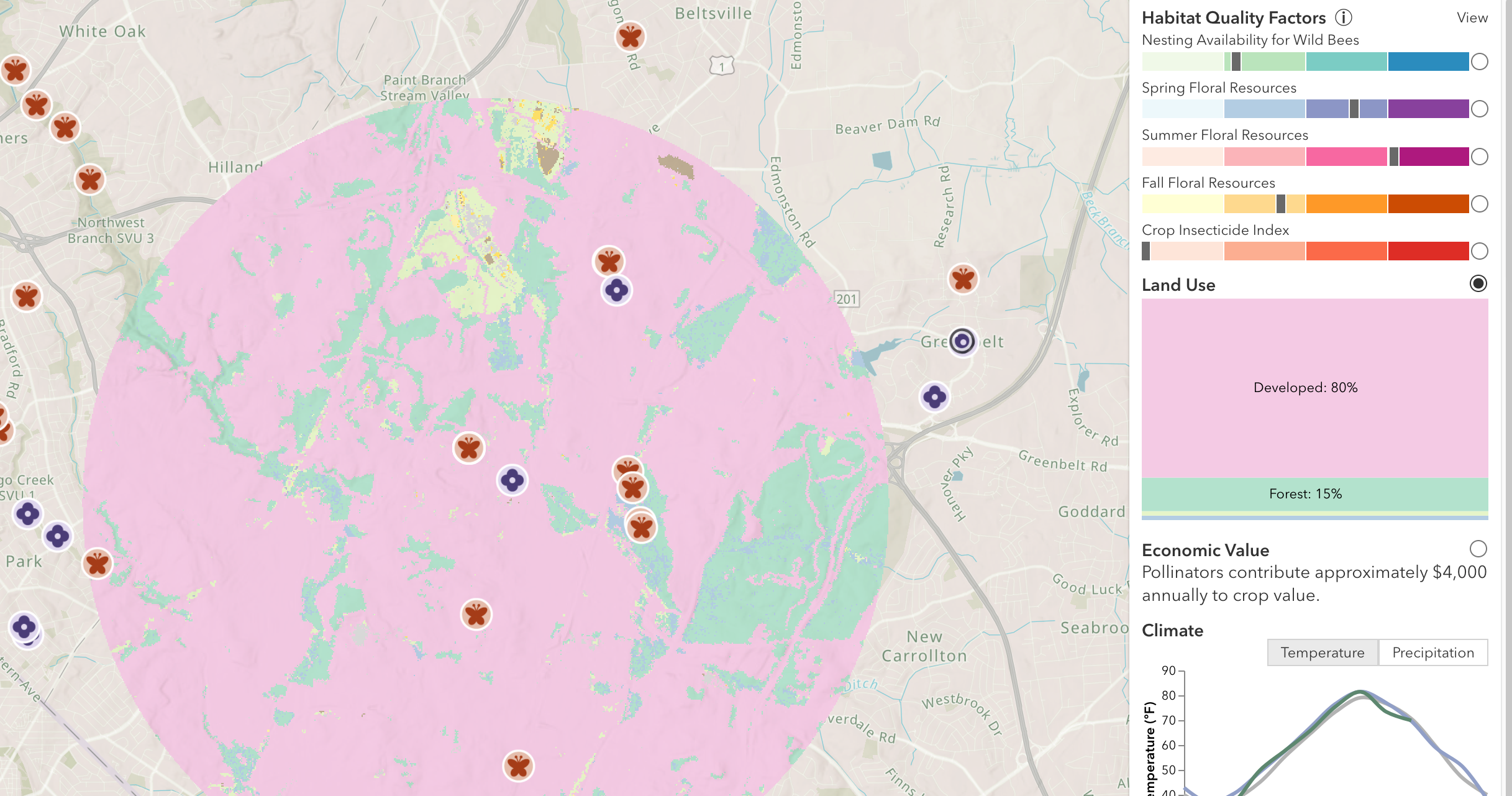By: Robert Weast
This article originally appeared in the Spring 2017 issue of BEEKeeping Your First Three Years
Have you ever wondered who so many thousands – maybe even millions – of people are fascinated with honey bees? There are probably hundreds of different reasons: They are fun to watch and study; they are wax builders, prodigious honey producers, and pollinators of one third of our food. The bee colony is an ever changing living organism – a dynamo of energy and industry
– always and forever interesting and a constant and always unending challenge. And it’s fun to become an “expert” answering the public’s many questions.
One thing that struck my mind was that the behavior of honey bees parallels human activity in its many, varied aspects. When you think about it, there are dozens of similarities between bees and their keeper guardians. Here are a few:
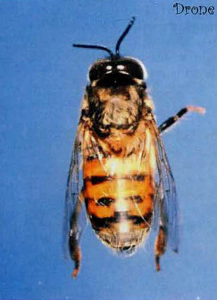 Kick the bums out. When the breeding season is over, drones become worthless and they are expunged, dragged from the colony and left to starve. Families, too, sometimes have ne’er-do-wells sponging off them – serial loafers. They eventually kick them out of the house as well.
Kick the bums out. When the breeding season is over, drones become worthless and they are expunged, dragged from the colony and left to starve. Families, too, sometimes have ne’er-do-wells sponging off them – serial loafers. They eventually kick them out of the house as well.
Killing the queen. Bees sometimes smother their queen by forming a tight ball around her, such as when they refuse to accept her as a new introduction by the beekeeper, or when the hive is disturbed she becomes nervous and runs over the combs. Killing queens is nothing new. In the 16th Century King Henry VIII beheaded two of his six queen wives.
Suicide bombers. Honey bees dive towards intruders, be it the beekeeper, bear or whatever else. After stabbing the victim, the embedded barbed sting becomes ripped from their bodies, no doubt causing excruciating pain, enraging them all the more. Death quickly follows.
In World War II, Japanese kamikaze pilots dove at U.S. warships and blew up the ships and themselves. The difference from the hapless bees is that kamikaze pilots knew in advance they were on a suicide mission. I used to think, “How unbelievable! Pilots deliberately commit suicide!” But today, it is common for terrorists in the Middle East to blow themselves up among the innocent populace.
One queen per abode. A bee colony will tolerate no more than one queen, with rare exceptions. When two queens are present they enter mortal combat, or the bees themselves may “do one in” – one queen per colony. In households, a teeny bopper daughter may challenge her mother, but usually the mother reins as the sole queen of the family. The unwritten rule prevails: One queen per family.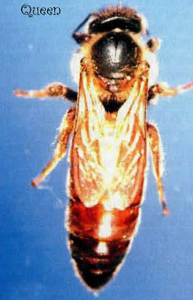
Guard duty. Sentinels are stationed at the entrances of hives and attack intruders, threatening, grappling and stinging them. Guards are everywhere in society, from the colorful Queen Guard at Buckingham Palace to those of the ceremonial Swiss Guard of the Vatican, to guards in all walks of life, from banks to the armed services, to guards for presidents and the pope. Bee guards are armed with stingers; people guards have guns and sometimes spears. Guards are ubiquitous.
Home hunting. Bee Scouts roam the countryside to look for a new abode. They report back to the waiting clustered swarm and by dancing they offer several possibilities. The swarm eventually chooses one, takes flight and moves in with carefree abandonment. They actually seem to be happy. People hire real estate agents who scout neighborhoods to help find a new home. With cheery enthusiasm, they tell clients of promising leads. After looking several over, the new owners move in to the one of choice with excitement and delight.
Drifters. Bees, on their first maiden flight, or those just released from their packages, frequently drift to the nearest, most busy hive because they haven’t yet oriented themselves to landmarks. Their lack of nervous, sneaky behavior gains them easy entrance to any of the adjacent colonies, especially those with numerous bees in flight. Strong hives become stronger and the weak become weaker. Human drifters wander aimlessly, sample and explore towns and locales of all sorts. Some even sneak into houses not of their own. They are invariably not welcome, to say the least.
Dancing in the dark. In 1927, Karl von Frisch, in his epic work, “The Dance Language and Orientation of Bees,” demystified the wagging and circle dance of the honey bee, interpreting how the bee reckoned and communicated distances of nectar sources to other workers. In 1958 Chubby Checkers created the Twist dance, an exuberant wiggle of fannies and shimmering hips on the dance floor. The happy, smiling dancers communicated fun and excitement.
Preparing honey and syrup. When bees bring in fresh nectar it has a high, excessive content of water, which needs to be removed. By fanning air across the open combs, the excess water is evaporated. When men or women collect sap from maple trees, it too, has excess water which must be removed. The watery sap is boiled until the correct viscosity is achieved to produce delicious maple syrup.
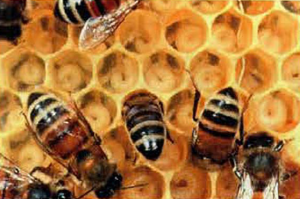 Cleaning house. Bees use their mandibles to glean debris from their hives and then take flight and drop the refuse. Bees also polish their hives by “scrubbing,” by moving back and forth. People scrubbed clothes with washboards and today use washing machines, brushes and brooms. They carry their debris outside into garbage pails and dumpsters.
Cleaning house. Bees use their mandibles to glean debris from their hives and then take flight and drop the refuse. Bees also polish their hives by “scrubbing,” by moving back and forth. People scrubbed clothes with washboards and today use washing machines, brushes and brooms. They carry their debris outside into garbage pails and dumpsters.
Nursing. Nurse bees feed royal jelly, plus two other ingredients, to young larvae for their first few days. Nutrient rich jelly is produced by their hypo pharyngeal glands. Nursing human mothers start newborns on nutrient rich mother’s milk, produced by their mammary glands.
Orientation. Bees use landmarks, trees, shrubs and topography to locate their hives. They also use ultraviolet and polarized sunlight for navigation and for communication of food sources. Before the advent of electronic wizardry, ships, pilots and landlubbers used landmarks, coastlines, compasses, the sun and stars, sextants and dead reckoning to find their way. Today, advances include the amazing GPS, global positioning satellite systems in vehicles. Nonetheless, people still include some landmarks in their search quests.
Home construction. Bees are wonderful architects producing pure white combs of wax. They instinctively gorge themselves with honey which produces little platelets of wax scales which they masticate and manipulate into hexagon cells. Men and some women are wonderful carpenters producing beautiful edifices. After eating a hearty breakfast they construct homes, piece by piece from lumber and many other materials.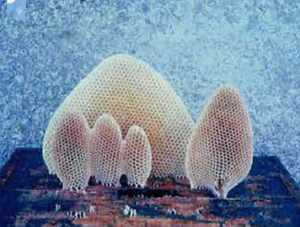
Kissin’ cuzins. Honey bees and humans share alike the popular nomenclature of race. The origin of bees is Europe, Africa and Asia, but named races, i.e., Italian, Caucasian, Carniolan, German, (black bee) Russian, African, Syrian and numerous others, including those of Southeast Asia, are, many times, named after their locales. Most of these races have been bred and developed (and improved?) by beekeepers.
Storing food. Honey is stored and preserved in sealed combs to prevent it from being walked on. People preserve fruits and vegetables in sealed jars to keep moisture and debris out.
Wrestling. Rival queens wrestle and fight in deadly combat until one stings the other. Lady wrestlers put on a show and fight in feigned, usually harmless combat, for the enjoyment of spectators.
Air conditioning. Bees deposit water in their combs and then fan their wings to evaporate the water to cool their hives. People use fans and air conditioners, and some residents in desert areas have roof top air conditioners which use the cooling effect of water dripping through fibers. A fan blows the cool air into the house below.
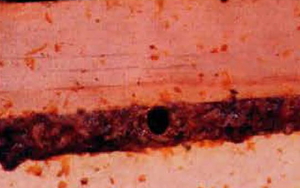 Heating systems. During the cold of Winter, bees form tight clusters, generating and preserving heat. Even during the throes and depth of a cold January in northern states, outdoor temperatures might descend to zero degrees, but through metabolic processes, the temperature within a cluster can rise to 93-96°. At that temperature the queen begins to lay and brood is reared during January and February. People select wood, coal, oil, gas or electricity to heat their homes, and with a thermostat, temperatures can be regulated and kept constant.
Heating systems. During the cold of Winter, bees form tight clusters, generating and preserving heat. Even during the throes and depth of a cold January in northern states, outdoor temperatures might descend to zero degrees, but through metabolic processes, the temperature within a cluster can rise to 93-96°. At that temperature the queen begins to lay and brood is reared during January and February. People select wood, coal, oil, gas or electricity to heat their homes, and with a thermostat, temperatures can be regulated and kept constant.
Sealing cracks. Bees gather propolis from sappy tree buds to seal cracks and holes in their hives; people seal cracks and holes in their homes, using caulking and weather stripping.
Shopping. Bees gather nectar from flowers for food; people gather food from their gardens.
Ladies in Waiting. Notice how worker bees circle, fawn, primp and preen their queens. In times past, in castles and courts of royalty, Ladies in Waiting did the same circling, fawning, primping and preening over their queens and princesses.
Robbers. Strong colonies will attack, plunder, rob and decimate weak hives, till not a drop of honey remains. In the 1930s, Bonnie and Clyde were notorious bank robbers, who attacked and plundered weak, vulnerable banks for their infamous capers, taking all the money.
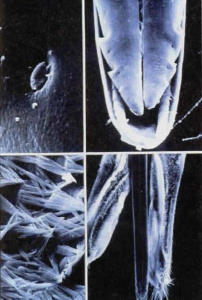 Weapons. Bees use stings as their attack weapons. A single bee sting usually does little harm, but massive attacks from Africanized bees can sometimes prove fatal. Nature abounds in creatures that have poisonous venom. Attacks by the Black Mamba snake of Africa and the Sea Wasp jellyfish of the South Pacific are fatal; the Gila monster lizard of sou them Arizona and Mexico and the Black Widow spider can cause severe pain.
Weapons. Bees use stings as their attack weapons. A single bee sting usually does little harm, but massive attacks from Africanized bees can sometimes prove fatal. Nature abounds in creatures that have poisonous venom. Attacks by the Black Mamba snake of Africa and the Sea Wasp jellyfish of the South Pacific are fatal; the Gila monster lizard of sou them Arizona and Mexico and the Black Widow spider can cause severe pain.
One wonders why it is an advantage for the honey bee to possess a barbed stinger, after all, to sting is a sure road to death. Wasps, hornets and bumblebees can sting more than once, as their stingers are not barbed, but if they were barbed and caused death, the loss to the small nests, especially when they are getting started, would be significantly harmful. However, the loss of a dozen or so honey bees in a single attack does not at all effect the overall welfare of the colony, which numbers in the thousands. The loss of stinging honey bees is expendable. The reason that bees have barbed stingers that become pulled from their bodies is that their stingers have muscles attached to them that continue to pump venom into the wound, which ultimately produces a maximum dose of poison. Moreover, even after the bee is mortally wounded it will continue to harass and scare its victim. Some native tribes use spears, bow and arrows and blowguns through which poisonous darts are blown.
Does Might Make Right? On occasion a swarm may invade a weak colony, overwhelm it, take over and sometimes kill the workers and their queen. This phenomenon seems endemic to the human condition beginning with primitive tribes to present day warfare nations: Strong warriors invade and overcome weaker adversaries. Peace is elusive.
Castes. Honey bee castes consist of queens, workers and drones, each with different duties and each with distinct body types. Ant castes include formidable soldiers with large mandibles that plunder other ant nests. The human caste system, that of social stratification, still exists in several world cultures, such as in India, which includes the lowest caste called the Untouchables.
Peaches ‘n Cream? Not all behavior is benign. Bees don’t tolerate imperfection and will jettison their crippled sisters. Should a worker emerge with incomplete or crumbled wings, she will be hauled out of the colony and left to starve. Hitler did the same with people he considered inferior and had them gassed.
Parasites. Bees have mites, moths and mice and that spells real trouble. People have lice, fleas and bedbugs, and that spells itching.
Dysentery. Bees get this affliction after consuming inferior stores. People get dysentery from a pathogen which infects their lower intestine, or, from eating inferior food.
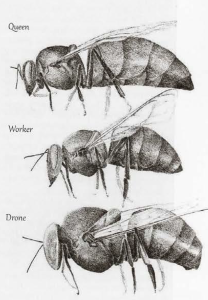 Loafers. During arid Summers, when no nectar is coming in, entire hives may simply go dormant; the workers just “hang out” and the queen stops laying. The drones of course, provided they are not evicted, free load as usual. One breeder, through selective, intensive inbreeding, produced a strain of beautiful golden yellow workers; he predicted and warned me they would simply would stop working after they reached a certain number. He was so right. They were almost queenlike Italian in their purity of yellow but lacked genes that would induce work. The entire hive simply loafed and did nothing. Some people are like that. They don’t have the work ethic, but simply sit around and watch the world go by. A human loafer might be a relative who just sleeps all morning, sits around watching TV all day and raids the refrigerator at night.
Loafers. During arid Summers, when no nectar is coming in, entire hives may simply go dormant; the workers just “hang out” and the queen stops laying. The drones of course, provided they are not evicted, free load as usual. One breeder, through selective, intensive inbreeding, produced a strain of beautiful golden yellow workers; he predicted and warned me they would simply would stop working after they reached a certain number. He was so right. They were almost queenlike Italian in their purity of yellow but lacked genes that would induce work. The entire hive simply loafed and did nothing. Some people are like that. They don’t have the work ethic, but simply sit around and watch the world go by. A human loafer might be a relative who just sleeps all morning, sits around watching TV all day and raids the refrigerator at night.
Keeping cool. When a hive becomes crowded during the hot, dry, torrid days of Summer, many of its bees will cluster outside of the hive to keep both themselves and the interior of the hive cool. Before air conditioning became popular, people would do the same thing: Entire families would sit outside on gliders and swings, or sit on the steps of their front porch to keep cool.
A Fanciful dialogue. In the 1942 movie “Tortilla Flat” a doctor asks young Alfredo what he had for breakfast. “Tortillas and beans.” “What do you eat at noon?” “Tortillas and beans.” “At night for supper what did you have to eat?” “Tortillas and beans.” “ls that all you eat, tortillas and beans?” Alfredo replies, “Sure. What more do you want?”
Jimmy Cricket asks Sue Bee what she had for breakfast. “Honey.” What do you eat at noon?” “Honey.” “At night for supper what did you have to eat? “Honey.” Jimmy Cricket can hardly believe what he is hearing. “Is that all you eat, honey?” Exasperated, Sue Bee replies, “Sure. What more do you want?”
In many ways honey bees are a reflection and mirror of ourselves. For better or worse, is it any wonder that we admire the honey bee?





